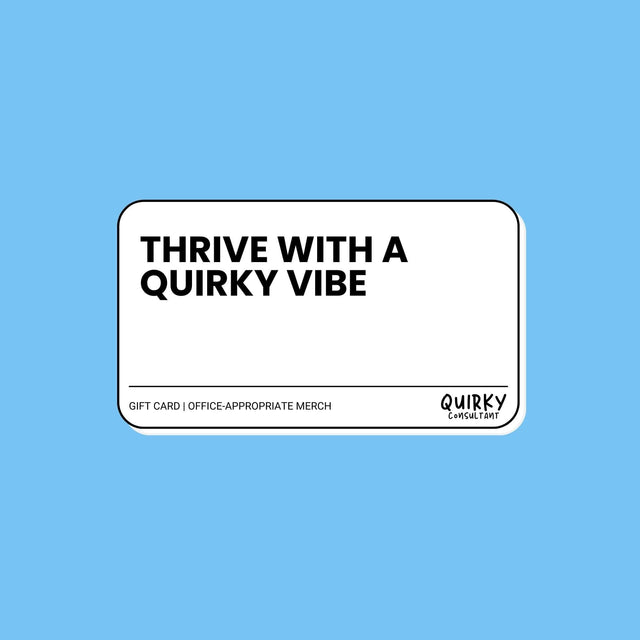Marketing magic with Siew Pui Yi

Malice and extortion: Siew Pui Yi is hacked
As her career began to take off, Siew became the victim of a serious cyberattack. After sending her laptop in for repairs, the machine was hacked, and Siew’s entire web-based identity was stolen. The thieves had access to all of her passwords and also gained access to Siew’s personal photo albums on Google Photos, which included many photos that she did not want to be released to the public. This created an opportunity for the hackers to blackmail Siew; they threatened to release her photos to the public or sell them to nefarious actors on the black market. Terrified, Siew went to the police for help.
Cybercrime can be difficult for many law-enforcement agencies to handle, and not having access to high-end computer scientists or other resources that could help them identify the criminals, the police helped Siew negotiate an agreement with the hackers. The best course of action seemed to be to set up an operation to help her pay off the blackmailers with the police’s assistance. Unfortunately, the operation failed. Siew ended up being robbed of her money and not regaining control of her identity. Siew’s situation was extraordinarily unenviable: imagine if hackers gained control of all of your online accounts, stole your identity, and then had the audacity to physically rob you. Worse still, the police effectively gave up after the compromised money-drop operation. An apologetic detective explained to Siew that their powers had run out without an arrest warrant for a specific person. Understandably, this news was not reassuring to Siew, who began to suffer from terrible stress and anxiety.
The police, however, were not altogether helpless. While local police were out of options, Siew’s detective directed her to Malaysia’s communications police, the equivalent of the American FCC. Siew brought her issue to the agency, which promptly began investigating the matter; as of this writing, the investigation is ongoing.
Back at the helm
While the police investigated, Siew began the complex work of taking her identity back. In January of 2020, Siew regained control of her accounts after a massive effort and locked the hackers out, which was no small feat. Still, the damage was done. The hackers had likely copied all of Siew’s data and stored backups somewhere. While she could at least post to her accounts again, her fanbase posed her next challenge. After re-establishing her online presence and explaining what had happened to her fans, Siew found that the internet – in all its glory — had little compassion for what she had been through.
Indeed, when she logged in and began posting again, there was an “overwhelming response from the internet asking where my pictures had been instead of offering to help.” Siew continues, “I guess I should have known better, that this is the human response, but I was still very depressed.” The indifferent response to her plight from her fanbase, plus the fact that Siew’s information was (and is) still in the hands of criminals, made Siew’s triumphant return to her platform somewhat bittersweet.
Siew explains that the reaction from her fans was especially frustrating because she had done everything right. She was victimized by an opportunistic criminal who happened to gain access to her hardware when she had sent it to an (ostensibly) reliable company for repair. She had not done anything stupid or wrong to be hacked. She hadn’t sent her details to a stranger online, posted a salacious image to Reddit, or given away a password in a scam; she hadn’t been socially engineered or duped. She had simply sent her laptop to a reputable shop for repair. Siew says, “I wasn’t just a random girl who made a wrong, dumb choice to send something to the wrong guy, and now it leaked – it wasn’t like that! I was hacked! But I very well know that’s what’s in people’s heads if [the pictures] ever leaked out.”
The toxic indifference of the internet was eye-opening to Siew. Many complex factors drive toxic online behavior among fanbases, but it is especially prevalent in online spaces that allow for anonymity and offer few, if any, mechanisms to hold offenders accountable. Psychology aside, it is an unfortunate reality for anybody who makes their living in the online space: fan culture relies on what academics like Derek Johnson call “Fantagonism,” where fans and content producers experience conflict over disagreements. Before regaining control of her identity, Siew had hoped that her fans would rally to her defense and provide some level of support. The reaction she received was instructive. She learned that, in general, one can safely assume that fans value content more than creators. The lens of social media specifically, and marketing more broadly, makes it difficult for audiences to perceive people in a well-rounded way. The images we cultivate of ourselves online are not a reflection of the totality of our humanity. Siew Pui Yi is not just a model who shares provocative photos, sings, or sells beauty products; she is a complete human being with her own experiences, ideas, values, and interests. But at the end of the day, audiences are usually interested in people in a more one-dimensional way, and it can be hard to maintain control of an audience that is growing exponentially. Siew, never one to give up on a challenge, thought hard about what to do next.

Control your narrative
Most of us probably will not have all of our personal information and photos hacked by criminals. But anybody who is trying to make it is going to face challenging situations. There will be people who want to see you fail, want to exploit you, and view you as a tool for their own needs. People who work in influencing and marketing, and especially people like Siew who make a living off of their image, are especially vulnerable to compromise or blackmail. After struggling with the situation for months, Siew came to an epiphany. Rather than waiting in limbo for something to happen, she decided to get ahead of the problem and control the narrative. She took the reins and leaned in to the risks she faced. After the hack, Siew’s victimizers threatened to reveal images of her body to the public or sell them on the black market. Siew realized that the blackmailer’s data could only retain value if Siew wanted to stick with PG-13 influencing and run-of-the-mill modeling. Instead of staying the course and being perpetually worried about blackmail, Siew decided to lean into the value of her own image and steal it right back from her hackers. Her follower count, which had been growing steadily since her return, skyrocketed as she dove into more risque modeling and influencing. This brilliant, somewhat risky move simultaneously destroyed the value of her blackmailers’ materials and gave Siew access to a new, extremely profitable market.
Siew’s exploration of more provocative content wasn’t a one-time thing, but rather, it has become a significant part of her empire. Some may wonder why Siew has continued making risque content. She could have chosen to do a one-time image release, flipping the bird to her hackers much like the Australian performer Sia did in 2017 and then returning to her previous niche of PG-13 modeling. But Siew continues, to this day, to make more adventurous content. To outsiders, this might seem like a worrying decision: couldn’t it lead to her being pigeonholed or stereotyped? Could it have consequences in Malaysia’s conservative cultural landscape? It surely felt good to spite her hackers, but putting herself out there in the ways she does is a risky decision for any influencer. Isn’t Siew worried about the risks?
Risk: just another obstacle
Whether you’re working as a professional falconer or developing custom software, risk is a real problem for any business. Risk can come in hundreds of disguises, ranging from an unexpected economic slump to armed robbery, competitors, or changes in consumer preferences. When Siew was hacked, she faced huge personal and professional risks, plus a deep sense of fear. In Siew’s case, she faced that traditional risk plus reputational risk and the real risk that nefarious actors would profit from her image without her consent. Her information being compromised forced her to face a huge, unexpected risk. Ultimately, like so many successful people before her, Siew solved the risk problem by embracing the idea that if you can’t change an obstacle, you should just work with it. From her viewpoint, she could either wait for the risk to find her, or she could bring herself to the risk and exert some control over the situation. Siew leaned into the risk and decided to move into a market that would allow her to control her image, enjoy profits, and undercut her blackmailers. But such a move would bring massive change to her operations.
Change is a constant in any business, but the world of social media marketing and influencing changes fast. A new trend can be born and die in a matter of hours. The hive mind can turn for or against an individual seemingly at random. In Siew’s world, there is a constant and ongoing battle for relevancy. Followers, and their attention, are finite resources. To succeed in influencing you must constantly be producing new content. To slow down or stop is to find oneself shuffled to the bottom of the algorithm. With that in mind, Siew is always exploring new and innovative ways to create content and present herself to her audience. It can be scary to jump into any new kind of production venture: a flop or a bad move could be catastrophic. “There are two ways I see it,” she says. “if you are afraid you can stay quiet and let yourself go. Or you are afraid but at least you try, and keep on trying, and maybe it will work out.” Ultimately, Siew decided to go for it and advanced into creating more provocative content.
This was not an impulsive move on Siew’s part. In any business, and especially in influencing, one must carefully weigh the risks of their business decisions. Siew did not randomly decide to take the risk and move into new markets without thinking about it. Instead, she carefully weighed her options and made a calculated decision. In the influencing space, creators face a constant battle for relevancy and novelty. Slowing down, stopping, or becoming stale will lead to the collapse of your house of influence, a collapse from which recovery may be nearly impossible. By entering a new market and creating a different kind of content, she could attract new followers and remain relevant to her current fans.
Planning ahead
Siew’s entry into new markets wasn’t impulsive or thoughtless. She knows the risks and carefully weighs them out. She is a careful thinker and a meticulous planner who runs through the possible outcomes of every situation and extensively war-games them. She has backup plans for her backup plans, all carefully plotted and thoughtfully analyzed. Siew has done more research and planning than many of the people who lead major companies. Before she jumped into new content and embraced the risk, Siew took the time to perform a detailed and thoughtful business analysis to anticipate how her fans would react.
What can we learn from Siew’s approach to risk? First, admit that it exists. Don’t live in denial: whatever your business is, there are real risks that will affect it. Embrace the uncertainty, and accept that failure might be an option. Think about different failure modes and how you might be able to learn from them. Do your research and learn everything you can about your market. But most importantly, Siew isn’t afraid to take meaningful action – after all the planning, the only thing you can do is to jump in. If you never convert analysis into action, you’ve already set a course for failure.

Attention is attention
One of the ways Siew changed her business was by advancing into producing adult content. She is one of the early pioneers of the Instagram Nude, the tasteful yet provocative genre of photo that frequently graces Siew’s social pages. She produces content on an OnlyFans page for fans who would like to see more. But such moves always bring controversy and haters. Human society by and large still views nudity, especially things like female nipples, as salacious and shameful. People are not always kind to the human beings who do nude modeling or other controversial work, especially if there’s even a whiff of sexuality about it. Siew has had to deal with more than her share of internet toxicity. How does she deal with haters and trolls?
“You always have to think of yourself as a marketer,” Siew explains. Successful influencers are able to compartmentalize themselves into their true selves and their branded selves. It’s easy to take it personally when people flame a photo or a post, or if someone has negative things to say about your business. But it’s critical to distinguish the business entity that is drawing criticism from the operator of that business entity.
Besides that, attention is attention. A little controversy can be a useful way to get attention, and attention is at the core of influencing work. Successful influencers attract attention to their posts to keep them relevant to the content-serving algorithms. Even if they’re trying to be mean, her haters are still boosting her business by interacting with her content. For Siew, it’s all about engagement, and even the worst trolls are still boosting her ratings, telling the algorithm to bump more of her work into the feed.
The algorithm is key to success in influencing, and Siew is acutely aware of how the content algorithm functions. Paying attention to the algorithm is just a modern-day version of “give the people what they want.” Siew points out that some of her best-performing posts have been posts that emulate the “blonde white chick” persona that the internet finds so alluring. Once she realized this, Siew found that she could simultaneously appeal to two groups of people within the algorithm: those seeking content featuring Asian women and those seeking the aforementioned blondes. By generating content that appeals to both niches, Siew has been able to capture an ever-larger following. Her philosophy is that one should follow market trends and do what it takes to gain exposure as quickly as possible before paring back to regular content. This aggressive trend-following has helped Siew become massively successful.
Diversify, but not into the weeds
Following trends in an evolving world inevitably means one must diversify, especially in the influencing space. What’s relevant and cool today could be cringe or passe tomorrow. Facebook is no longer useful for reaching young markets. Instagram is clumsily moving toward videos as TikTok’s popularity is growing. Siew’s business as an influencer is lucrative and successful, but she is acutely aware that continued success is going to require her to continue evolving. She’s expanded from PG-13 modeling into tasteful nudes and provocative photos. She founded cosmetics lines and is now producing music and creating content on her OnlyFans channel. Siew makes it look easy, but skillful diversification requires extensive planning. She explains that entrepreneurs who successfully diversify must be able to both accept reality and take risks.
Face what is
First, says Siew, you must engage with reality. You should face what is, and ignore what should or could have been. In her case, her trajectory as a model was altered when her data was stolen. Siew did not flinch in the face of this reality or mope over what she lost. Instead, she decided to lean into reality and assert her control over her own image. Humans are masters of denial and selective perception. It’s easy to misinterpret reality and make bad business decisions unconsciously. One must be able to live in a world of facts because making real decisions based on imaginary information is not a skillful thing to do. You can achieve meaningful success by accepting and engaging with what is real. To do this, one must overcome one’s inherent cognitive biases and take an objective look at market conditions, trends, and one’s current situation. In other words, you should do your homework before you diversify. Don’t just haphazardly leap in some random new direction without carefully planning your moves. Pay close attention to what’s happening worldwide and in your market. Critically, you should know your place in the market: where do you fit in? Even as you diversify, understand how your brand fits into the larger picture for whatever market segment you’re capturing. “You can jump from market to market, but you should stick to your category in whichever market you decide to pursue,” she says. To find success, especially as an influencer, Siew says “You really have to be a market researcher.”
Siew takes market research seriously. Her planning sessions look like something out of a war movie, complete with glass whiteboards, decision trees, and detailed analyses. She is not a twenty-something kid aimlessly releasing content. She is a shrewd marketer who is always planning for contingencies and developing timelines. Being thoughtful about what is, and using that information to plan for a variety of outcomes, is at the heart of good decision-making.

Invite luck
Careful analysis is good, but at some point, you have to make a decision. If there’s not enough data to conclusively make a decision, you could push out a soft launch, a beta product, or another exploratory move to gauge the market’s reaction. Siew describes this as inviting luck. Without trying something, you’re not going to know whether or not it works. Her most recent test case involves her expansion into singing.
Some models and influencers, Siew observed, had found success in singing. If she did it right, she could be a pioneer in the Malaysian market. She exercised her usual thorough planning, collaborated with experienced music producer Goldfish, and released her first song in January of this year. The song has received critical acclaim and is widely considered to be catchy and well-produced: Siew can now add pop singer to her extensive resume. She invited luck by trying something new, but she didn’t just dive in without any preparation: Siew prepared extensively, collaborated with industry experts, and planned for a variety of contingencies including both success and failure outcomes. Luck favors the prepared.
Don’t stop
Siew’s success has been noteworthy. Through hard work and force of will, she has manifested a career anybody would be jealous of at the shockingly young age of 23. But Siew knows that present success is not necessarily an indicator of ongoing success. She is planning not just for her immediate future, but for years down the road. Much like a skydiver, Siew’s success depends on extensively preparing for and then taking a risk. Jumping out of a plane is risky: smart jumpers check their rigging and their chutes and prepare extensively before leaping into oblivion. Only a fool would jump from a plane without double-checking everything. Siew is no fool, and she knows that continued success is going to require continued risk-taking. Her advice to entrepreneurs? Don’t get comfortable. Comfort is a sign of complacency, and complacency kills. If you decide to stop and take a breather, you will find that the world has not stopped with you. Failing to advance your business model in the face of an ever-changing world is a guaranteed recipe for disaster. The world moves on with or without you: stopping to rest on your laurels is only going to lead to irrelevancy, especially in the world of influencing. The average customer will stop caring about you the second you stop producing value for them.
Don’t compete with yourself
Diversifying and finding new ways to bring customers value is absolutely essential for sustained business success, but what if your new products end up working at cross-purposes? What if your efforts to diversify end up confusing customers of your brand? Sometimes, an idea for diversification might seem brilliant at one moment only to be changed by ongoing events. Before expanding into more risque ventures, Siew launched a line of cosmetics. “When I launched the makeup line, it was a passion of mine. It always has been,” she explains, “but the environment has changed.” Siew’s image as a PG-13 model worked well with her cosmetics brand. However, cosmetics buyers might feel differently about buying something from a model that has expanded in a more provocative direction. Initially, Siew had hoped to convert her cosmetics line into another empire. But during her planning, she realized that this transition would likely generate conflict. As an influencer, she is her brand. She could either dive into cosmetics and leave behind her tasteful nudes and sultry poses, or she could continue producing the content she enjoys and let the cosmetics line go. Ultimately, Siew decided to hand off her cosmetics brand to a different set of spokespeople. The cosmetics market in Malaysia is very different from the market for Siew’s Instagram feed and other content, so rather than create confusion or conflict among customers, Siew spun off the cosmetics and continued producing her content. The key insight from this experience, she says, is to remember that you don’t serve at the mercy of your brand: your brand should serve you.
You can’t please everyone
Some may ask why Siew doesn’t just walk away from her more controversial content and embrace a more traditional role. The answer is that, like anybody else, Siew is a complete human being who has her own ideas and ethics. After her hack, part of her journey was to lean into the totality of who she is. While it might make some prudish individuals feel uncomfortable, the simple fact is that Siew is comfortable with all aspects of her humanity. While the world likes to pretend it’s not so, women have physical and sexual sides that are part of who they are. Siew has decided that it’s better to embrace all of herself than to let the expectations of others define who she is or what she does. She provides an example from her past: when people encouraged her to make cleaner content, she would periodically try to cater to that by posting about traditionally safe topics like finding love. The internet, being what it is, had two responses: a handful of people telling her to go get it and a ton of people accusing her of being a floozy. No matter what you do, Siew says, you won’t be able to please everyone. So don’t worry about it. Don’t try to cater to your haters. Make what you like and flip the bird to the haters.
Siew’s decision to ignore the critics and do what she likes is part of a global trend. Historically, women in popular culture have fit into a specific sort of mold: thin, busty, doe eyes, a specific kind of timidity that isn’t too threatening to the fragile male egos in the audience. Contemporary women have had more than enough of that nonsense, and modern men are beginning to see the light. Real women are becoming famous. People like Rebel Wilson, Melissa McCarthy, Lizzo, and Adele may not conform to the ‘traditional’ standards of femininity, but rather than try to change who they are they’ve taken ownership of the fact that they are who they are. Men are enjoying a similar transformation away from the silly Brawny paper-towel man machismo of the past and entering an era where having a “dad bod” is accepted. Siew Pui Yi has taken ownership of the totality of her image: she has embraced authenticity rather than cultivating an artificial image or trying to be someone she’s not. In a world of empty suits and soulless business jargon, there is great power in being an authentic human being.

Keeping the wolves away
Whatever your enterprise looks like, success will bring you into contact with people who don’t necessarily have your best interests at heart. Just as sharks have remoras, successful entrepreneurs inevitably attract the attention of people who want to coast on your success. There’s a difference between someone who likes you for who you are and someone who likes you for what you can give them. We’re not trying to sound paranoid, but the reality is that every person you interact with has their own set of incentives and agendas, which may not align with your own. The friendly loan officer, the business partner with the idea, the agent with the brand new contract – the world is full of people who view you and your brand as a commodity to be exploited. How does Siew deal with this unpleasant reality?
First, she says, acknowledge it. “You do feel people wanting things from you. Your whole life gets turned over,” she says. Once you’ve acknowledged reality, engage with it. Strike a balance between rationality and emotion. Understand where people are coming from and, more importantly, understand which category they fall into: are they family? A longstanding friend? A surface-level acquaintance, a business partner? Understanding where people are coming from and thinking about the nature of your relationship with them can help you contextualize someone’s actions or needs. Sometimes, they just want to convert your money into their money. “You feel this in every social segment you have. It doesn’t feel good, to be honest, because as a human you don’t want to feel that way. But in a rational sense, it is quite normal.” Siew’s advice? Strike a balance, be realistic, and take the time to treasure the people who really matter. “Ask yourself: has there ever been a time where someone came into my life and didn’t want anything from me?” Those people are the ones you should treasure. The rest of the pack, the wolves circling at the edge of the firelight, should be treated with caution.
Siew Pui Yi’s five tips for building a brand
Siew Pui Yi is one of our most successful marketing minds. Whether you’re launching a startup or moving your business towards growth, Siew has five pieces of advice to offer on building your brand.
1. Do your research
There is no shortcut for this. There’s no way around it. If you are going to have a functional business, you have to have a functional understanding of how your market works. Who is your customer? What do they want? If you’re selling vanilla in a chocolate-loving town, you’ll find yourself struggling unless you can either convert people to your vanilla-flavored ways or find the few underground ‘nilla fans out there. Understanding the market you operate in is absolutely essential for building a successful brand.
2. Remember your roots
What inspired you to do what you do? Where did you come from? Who was there for you along the way? Building a personal brand that won’t make you psychologically unwell requires authenticity. Your formative experiences made you who you are: own them.
3. Don’t change for your brand.
Remember why you decided to do what you do. What do you love about your brand? What parts of it speak to you personally? What do you want to share with the world? There will be people who want to change you and people who want to change your brand, but those people have their own reasons. They’re showing you a false synergy. Your brand is your own: don’t try to imitate someone else. If someone doesn’t like your brand, they can start their own.
4. Always have a plan
It can feel good to fly by the seat of your pants, but if you don’t plan the flight you won’t fly the plan. Goals and ambitions are good, but unless you have a realistic plan for how to achieve them, you will never actualize them. Think about what you want and how you’ll get there. What are your first steps? How can you begin building momentum in the right direction? Write your ideas down. Make a business plan. Do a SWOT analysis. There’s a reason that business schools focus on teaching students planning tools.
5. Always have a plan B
This has always been good advice, but in the wake of the early 2020s and the continual onslaught of unprecedented events, it’s more salient than ever. Having a plan is great, but anything from pandemics to cybercrime or social unrest can completely derail you. Think about failure modes: how can this go wrong or blow up in my face? Planning for failure might not mesh with the positive-psychology mindset we see in the zeitgeist, but not planning for failure is a great way to get caught with your pants down. Build a plan B. Even if you don’t need it you’ll be glad you did.

Siew Pui Yi: not done yet
Despite all the evidence indicating that she is a skilled marketer, many people might underestimate Siew’s abilities based on her gender, appearance, age, and occupation. Women, both influencers and regular people, are chronically underestimated in both the traditional and entrepreneurial workforce. A young woman who makes money by influencing is not usually stereotyped as a formidable business mind. But just because some people are naysayers doesn’t mean they’re right. It’s easier to poo-poo people and wave them off based on prejudice or a lazy metric than it is to consider that they might actually be smarter than you. But how many investment bankers or CEOs or account executives could actually make Siew’s business model work? How many of them could garner tens of millions of followers and gain international fame? Siew’s ability to think ahead, plan for contingencies and pivot to new things as the market shifts winds are impressive. She is the leader of her brand, the captain of her own ship, and the master of her own destiny. Siew Pui Yi’s influence is growing by the day. She’s exploring new markets, thinking, planning, and learning. She’s achieved unbelievable things in her young career – and she’s not done yet. Siew Pui Yi is here to stay.





0 Comments
Nobody's told us there thoughts about this article. Tell us yours below.